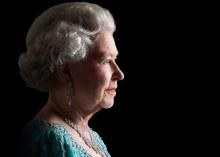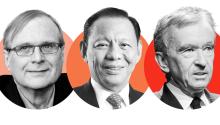Ultra-wealthy fortunes flatline amid global turmoil

Rapid growth in the number of ultra-wealthy individuals worldwide has slowed to a crawl and their total wealth has dropped for the first time in three years to $32.3 trillion.
The global population of the super-rich, those with $30 million or more in net worth, rose by a mere 0.8% to 265,490 individuals in 2018. This was in stark contrast to the increase in population of 12.9% in 2017. The 1.7% fall in combined net worth of ultra-wealth holders to just over $32 trillion last year was put down to in part to a late-year slump in investor sentiment and global equity markets.
“Developments over the first half of the year largely justified this sense of caution, with volatile asset markets, a deepening US-China trade war, rising Brexit-related threats and weaker global demand bringing about another challenging environment for wealth generation,” new research by Wealth-X said.
However, a return to rapid population growth to 353,550 individuals by 2023, possessing a total combined wealth of $43 trillion was predicted by the World Ultra Wealth Report 2019.
 Women formed a larger portion of the global ultra-wealthy cohort than ever before. The number of ultra-wealthy women rose to almost 39,000, equivalent to a record-high share of 14.6%. Among ultra-high net worth (UHNW) individuals below the age of 50, women account for almost one in five.
Women formed a larger portion of the global ultra-wealthy cohort than ever before. The number of ultra-wealthy women rose to almost 39,000, equivalent to a record-high share of 14.6%. Among ultra-high net worth (UHNW) individuals below the age of 50, women account for almost one in five.
The report said this indicated “shifting trends in global wealth distribution, changing cultural attitudes, the rising frequency of inter-generational wealth transfers, and reveals how technology is creating new opportunities for female entrepreneurs to create wealth.”
The report said all seven regions of the globe saw a decline in ultra-wealth, ranging from a dip in the Middle East to a drop of 7% in Latin America and the Caribbean. Net worth in Asia fell at a faster rate than in both North America and Europe.
The ultra-wealthy population grew robustly in the Middle East and modestly in North America and Europe. Meanwhile, the other four regions posted falls in population, led by a 6% decline in Latin America and the Caribbean.
.jpg) The United States maintains its pre-eminent position as the home for UHNW individuals, accounting for a 31% global share of the population. Streets ahead of China in second place at 9% and almost 7% for third-placed Japan.
The United States maintains its pre-eminent position as the home for UHNW individuals, accounting for a 31% global share of the population. Streets ahead of China in second place at 9% and almost 7% for third-placed Japan.
New York regained its status as the world’s leading UHNW city from Hong Kong. Last year, the top 10 UHNW cities accounted for 18.9% of the global ultra-wealthy population. Modest ultra-wealthy growth in New York was enough for it to retake the top spot as Hong Kong wealthy were impacted by the slump in Asian stocks and a softening Chinese economy, the report found.
However, Hong Kong has by far the highest density of ultra-wealthy individuals—1,364 for every million adults. Hong Kong’s UHNW population density was remarkably higher than the next-ranked countries of rival financial hubs Switzerland, Luxembourg and Singapore and more than four times the density of the US.
 Philanthropy was the most common interest among the global ultra-wealthy population, with 36% engaged in benevolent causes, the report said.
Philanthropy was the most common interest among the global ultra-wealthy population, with 36% engaged in benevolent causes, the report said.
“Levels of philanthropic giving have increased over the past decade, encouraged by high-profile initiatives such as the Giving Pledge, a growing range of channels and vehicles for philanthropic activity, changes in societal attitudes towards civic engagement and the environment, and a widespread public perception of rising wealth inequality.”






